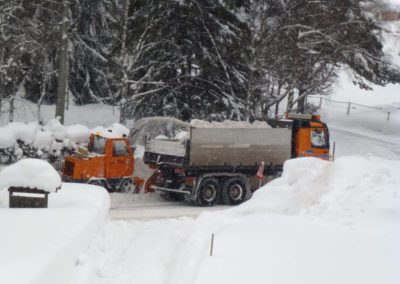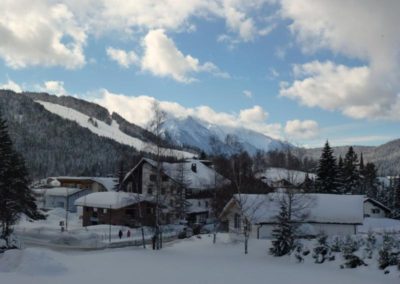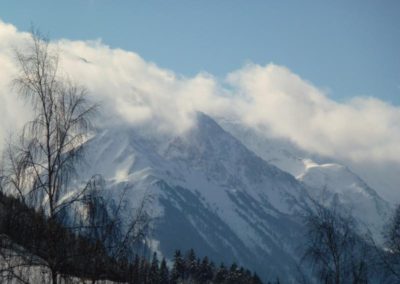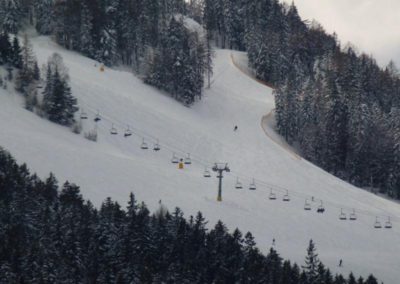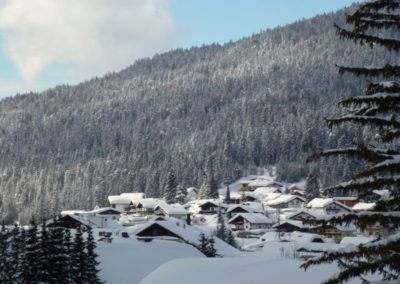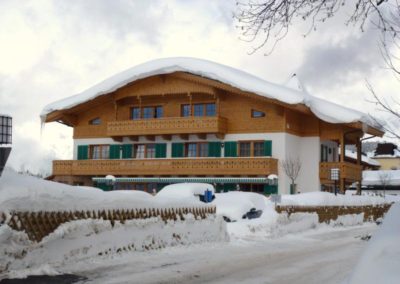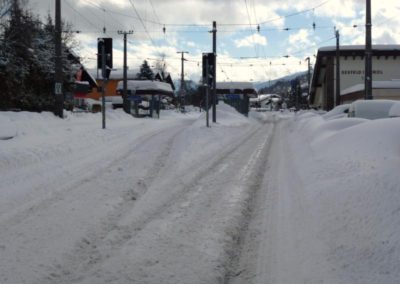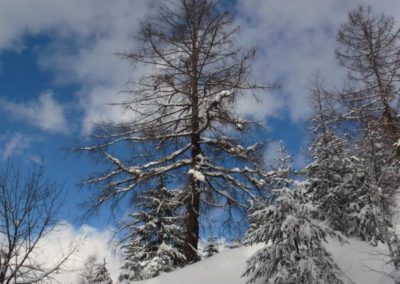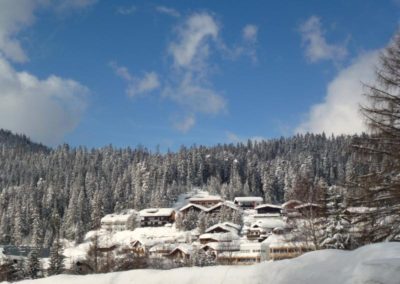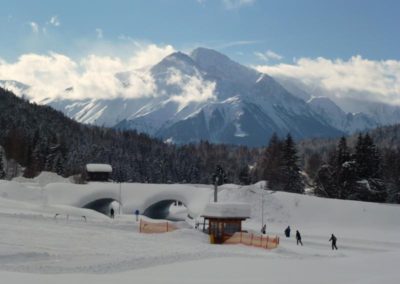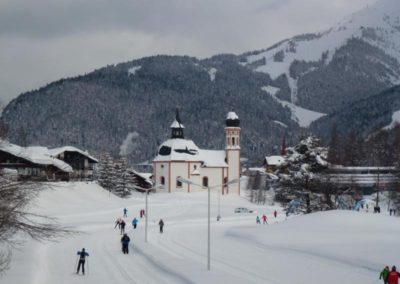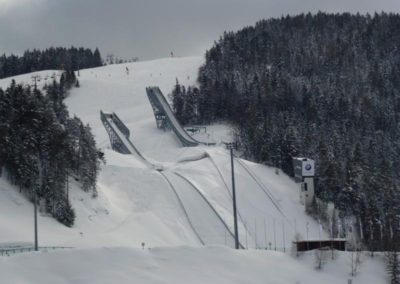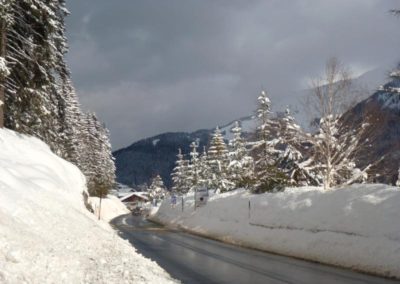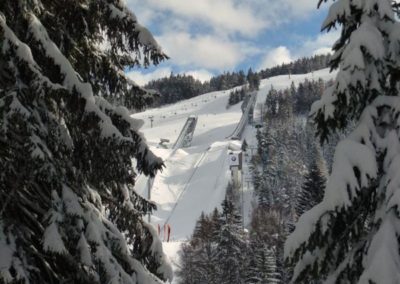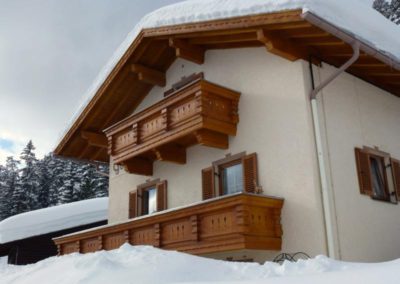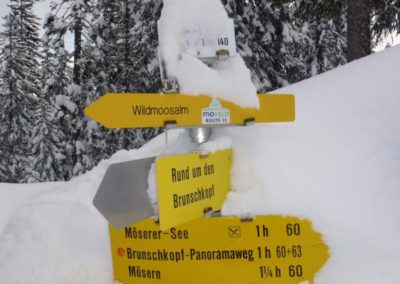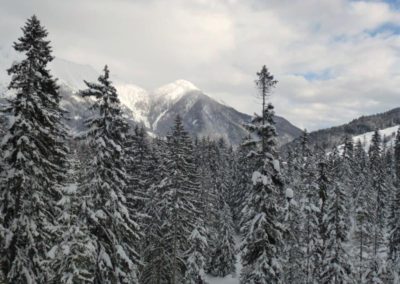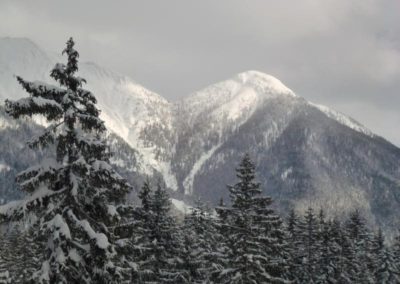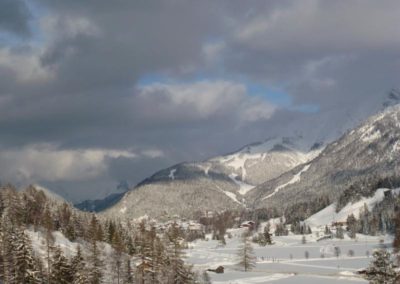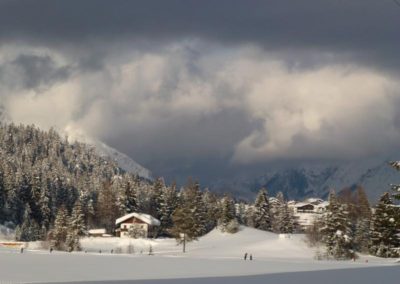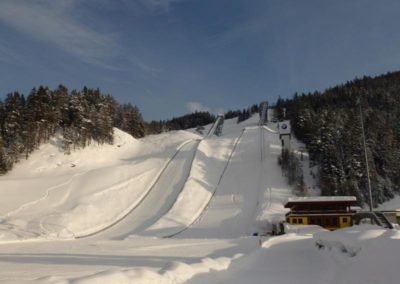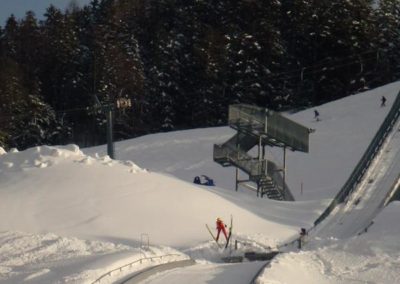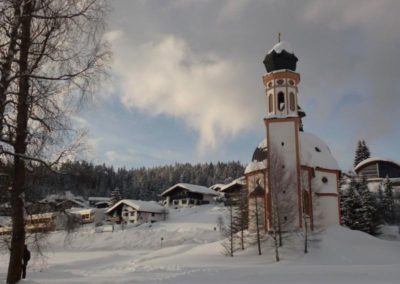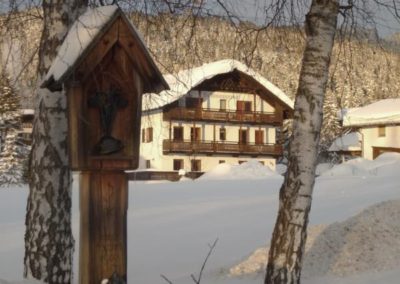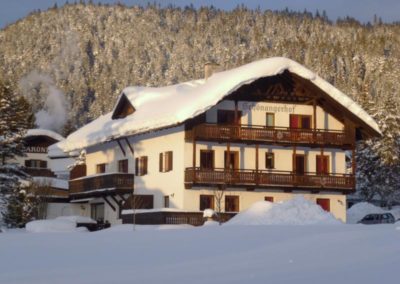Day 6 – Snow Hiking To Mosern
Today’s Blog Entry
By mid-morning on Thursday it looked like the snow had finally stopped. As it turned out some snow flurries and the occasional snow shower continued throughout the day, but we were also treated to some blue skies and sunshine along the way. The temperatures were also quite a bit warmer than they were upon our arrival with afternoon highs reaching into the upper 20’s and low 30’s.
With about two feet of new powder on the ground in the village the local crews had their hands full clearing the roads and sidewalks. We witnessed some classic examples of their Teutonic efficiency from our balcony, most notably a self-propelled snow thrower that fed a solid stream of snow from the sidewalks into a conga line of dump trucks queued up to catch the stream of snow and carry it away.
The original plan for today was going to be another rail excursion, this time to the popular ski resort of St. Anton. St. Anton is perched high in the Tirolean Alps to the west of Seefeld (and not far from the Swiss border). Unfortunately the heavy snows were triggering avalanche warnings and pass closures throughout much of Austria, so rail travel didn’t look like a smart play unless we really wanted to get stranded somewhere. So as a safer alternative we walked down into Seefeld to enjoy one of the local winter hiking trails. Our trail of choice was a long loop that took us towards the village of Mosern and the Moserer See, a picturesque (albeit frozen) lake located nearby. We followed the Olympia Strasse through Seefeld before we turned southwest on the Moserer Strasse and officially picked up the trail.
As we headed out of town we passed the Seekirchl or ‘Little Church In The Lake’ that was completed in 1666. The church exterior is dominated by an onion-shaped tower while the interior layout is based on a rotunda – both highly unusual for Tyrol. When originally built the church was on an island in the middle of the man-made Kreuzsee or ‘Cross Lake’, thus the name. The lake was drained in 1807 but local government periodically talks about flooding it once again. That might be a bit difficult as the former lake bed is now a very popular cross-country skiing facility.
After passing the Seekirchl we crossed the road and climbed up into the hills on trails obviously cleared by snow thrower as the trails were lined on both sides with cleanly cut 3-4 foot high walls of snow. The trail took us through the forest and all the way to the outskirts of Mosern, just above the Moserer See. The maps and signage were a bit fuzzy at this point but while we stood there trying to figure out which way to go another couple stopped to lend us a hand. It turns out that they were Swedes currently living in Italy but vacationing in Austria who had just recently moved back from living outside of Charlotte NC on the shores of Lake Norman. Talk about global! They seemed pleased that we were familiar with Lake Norman. Oddly enough they thought that we were from New England based on our accents. Hmmm.
The return leg back to Seefeld followed a different route so we were able to see new and different things along the way. Perhaps the most impressive were the two ski jumps located at the Toni Seelos Olympiaschanze. The ‘normal’ hill has a 99 meter long jump while the ‘medium’ hill has a 68 meter long jump. There’s nothing normal (or even medium) about hurling yourself off of either one!
Just beyond the ski jumps was the biathlon shooting range. For those not familiar with the biathlon, it’s a winter sport that combines cross-country skiing and rifle shooting. How these skiers manage precision target shooting after an extended stretch of skate-style cross-country ski racing is beyond me. Their breath control must be phenomenal.
Next we crossed the base of the Gschwandtkopf ski area, the second largest Alpine (downhill) ski resort on the Seefeld plateau. The largest resort is the Bergbahnen Rosshutte and it’s located in the opposite direction from Gschwandtkopf, just outside of the Seefeld village center and not far from our apartment. There are several other ‘Mom & Pop’ hills scattered around the plateau, some of them with only a single lift or rope tow.
After walking across the outdoor sun terrace at Gschwandtkopf we passed by the the Olympia Sport and Congress Centre. This facility boasts an indoor pool complex complete with a white water slide, extensive sauna facilities, cold-water plunge pools, a restaurant, and an outdoor skating rink. Add in a large playground for the kiddies and I imagine that some families will never leave here, especially if the weather’s bad.
After this several hour hike we treated ourselves to lunch at downtown restaurant and then did some grocery shopping before heading back to the Schonangerhof for a quiet evening.

